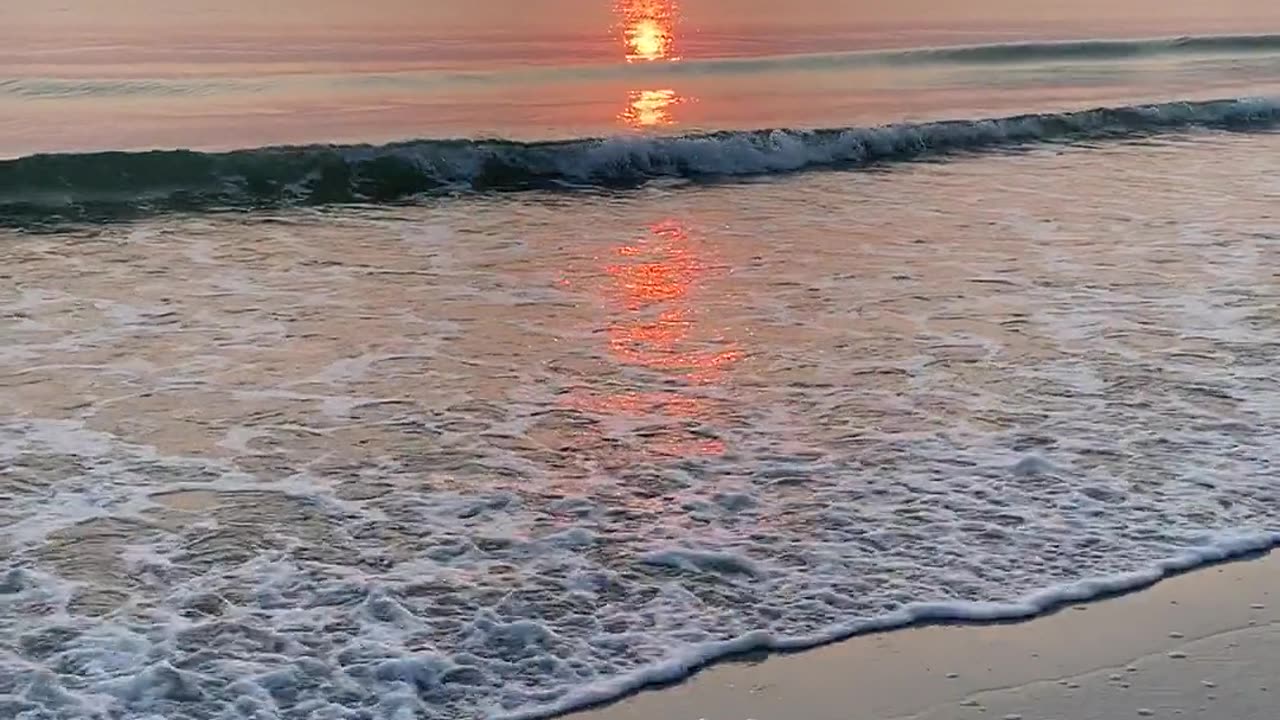Premium Only Content

Sun Rise
Certainly! The sunrise is a natural phenomenon that occurs when the Sun appears above the horizon in the morning, marking the beginning of daylight. This phenomenon is caused by the rotation of the Earth on its axis. As the Earth rotates, different parts of its surface are exposed to the Sun's light, causing the transition from night to day.
Here's a more detailed explanation:
Earth's Rotation: The Earth rotates on its axis from west to east. This rotation takes approximately 24 hours to complete, giving us one full day. This rotation causes the Sun to appear to move across the sky from east to west over the course of the day.
Horizon and Atmosphere: The Earth is surrounded by an atmosphere made up of gases. As the Earth rotates, different parts of the planet come into view of the Sun's rays. When you are on the side of the Earth facing the Sun, you experience daylight, and when you are on the side facing away from the Sun, you experience nighttime.
Sunrise: As the Earth rotates, the first part of its surface to be exposed to the Sun's rays experiences the sunrise. This is when the Sun's upper edge becomes visible above the horizon. The Sun's light passes through the Earth's atmosphere, scattering different colors of light and creating the beautiful hues often associated with sunrises and sunsets.
Changing Colors: The colors during sunrise can vary depending on various factors, such as the composition of the atmosphere and the scattering of sunlight. The longer path that sunlight travels through the atmosphere during sunrise and sunset causes shorter wavelengths (like blue and green) to be scattered more, while longer wavelengths (like red and orange) are scattered less. This is why you often see shades of red, orange, and pink during sunrise.
Full Sunrise: As the Earth continues to rotate, more of the Sun becomes visible, and the sky brightens further. Eventually, the entire disk of the Sun rises above the horizon, and we have full daylight.
Location and Seasonal Variations: The exact time and appearance of sunrise can vary depending on your geographical location and the time of year. In some places, especially near the poles, there are times of the year when the Sun doesn't rise for an extended period (polar night) or doesn't set for an extended period (polar day).
Sunrises are often admired for their beauty and the sense of renewal they bring as they mark the beginning of a new day. They have also been culturally significant in various societies throughout history.
-
 1:08:55
1:08:55
Donald Trump Jr.
6 hours agoGlobalist Panic & Populist Prosperity, Live with Natalie Winters & Alex Epstein | Triggered Ep229
109K62 -
 1:04:29
1:04:29
BonginoReport
4 hours agoFDA Vax Pusher Needs to Look in the Mirror - Nightly Scroll w/ Hayley (Ep.16) - 03/31/2025
59.4K34 -
 1:16:28
1:16:28
Kim Iversen
5 hours agoThere Was No COVID Virus! How We've All Been Duped By The Medical Establishment
103K121 -
 LIVE
LIVE
SpartanTheDogg
6 hours agoPro Halo Player
153 watching -
 LIVE
LIVE
Crossplay Gaming!
1 hour agoLet's Check Out MORE Metroid Prime Remastered in 4K! (With the RTX 5090!)
96 watching -
 14:24
14:24
AlaskanBallistics
9 hours agoMDT HNT26 Chassis on A Remington 700 7mm Remington Magnum
1.24K4 -
 54:13
54:13
Sarah Westall
3 hours agoCIA Disclosures: Ark of the Convenient, the Pyramid Code, Ley Lines & Earth’s Energy w/ Jason Shurka
19.7K10 -
 13:34
13:34
T-SPLY
5 hours agoCNN Is Now Accusing Trump Staff Of War Crimes
22.2K11 -

2 MIKES LIVE
5 hours ago2 MIKES LIVE #199 Deep Dive Monday!
3.99K3 -
 54:40
54:40
LFA TV
9 hours agoThe World Realigns Against America | TRUMPET DAILY 3.31.25 7PM
19.5K10